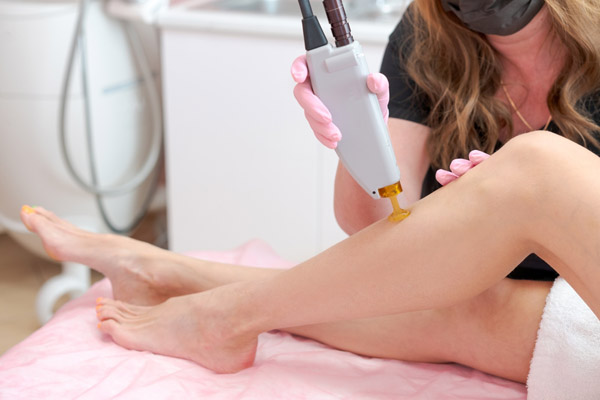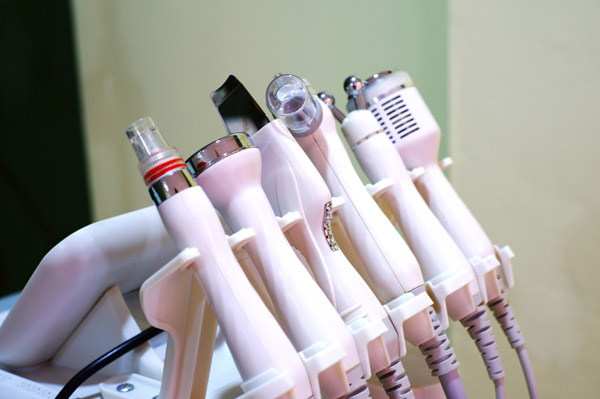LiposuctionSchaumburg, IL
Liposuction falls under the umbrella of cosmetic surgery. It involves using suction to remove fat deposits from specific body parts, like the neck, arms, buttocks, thighs, hips, and abdomen. The procedure is also known as body contouring and lipoplasty. It can be used to improve the definition of targeted parts of the body.
Liposuction should not be mistaken with a weight-loss surgical treatment. People who are overweight can get rid of more fat by starting a diet-and-exercise program or getting surgical procedures like gastric bypass surgery. Liposuction is for people who have already reached and currently maintain a weight that they are happy with. The procedure eliminates stubborn layers of fat that they might still have on their frame.
Essential things that you should know about liposuction
The results of liposuction are not permanent. Gaining weight after the procedure can lead to fat returning to the treated areas. Liposuction is not a replacement for eating healthily and exercising regularly. The best results are achieved if patients maintain a healthy lifestyle after the procedure.
Liposuction can be broken down into four different types. These are as follows:
- Tumescent liposuction: This is the most prevalent type of liposuction. A mixture of a sterile solution, local anesthetic, and epinephrine is injected into the fatty area before the surgeon makes any incisions. This helps numb the areas targeted, minimize bleeding during the procedure, and constrict blood vessels. The surgeon then makes small incisions and inserts a cannula (a thin tube) into the incision. The cannula is attached to a vacuum that sucks away fat and fluids from the patient's body. Body fluids can be replenished with an intravenous line after the procedure.
- Super-wet liposuction: This involves injecting a greater quantity of tumescent solution into the fatty area before the surgeon makes any incisions. The solution reduces blood loss and minimizes inflammation, bruising, and discomfort during and after the procedure.
- Ultrasound-assisted liposuction: A special cannula that emits ultrasound waves is used to break up the fat cells before they are suctioned out of the body. This type of liposuction is often used on areas that are difficult to treat with tumescent or super-wet liposuction, such as the upper back. It is sometimes combined with traditional liposuction.
- Power-assisted liposuction: A mechanical device is attached to the cannula to help move it in a rapid back-and-forth motion. This type of liposuction is less invasive and causes less trauma to the surrounding area than other types of liposuction. It is often suggested for stubborn fat deposits.
The procedure
Liposuction can be performed under general anesthesia, which means the patient will be asleep during the procedure, or local anesthesia, which numbs the targeted area but enables them to stay awake. The type of anesthesia used will depend on the size and number of areas being treated.
The duration of the procedure also varies depending on how much fat needs to be removed. More minor procedures can last anywhere from 30 minutes to a couple of hours, while more extensive procedures may last up to six hours.
The patient can expect bruising, swelling, and soreness after the procedure. These side effects are generally temporary and should go away within a few weeks. More severe side effects include infection, skin necrosis (death of skin tissue), and deep vein thrombosis (blood clots in the leg). These complications are rare but can occur.
Liposuction is considered a safe procedure, but there are risks involved. These include infection, bleeding, blood clots, and reaction to anesthesia. The ideal candidate for liposuction:
- Is at or near their goal weight
- Has stubborn pockets of fat that do not react to diet and exercise
- Is in good physical health and does not have any medical conditions that would make surgery risky
- Should be a non-smoker or ready to give up the habit before their treatment
Most people who get liposuction are happy with their results. Complications from the process are rare but can include infection, skin numbness, and asymmetry. Most people see results from liposuction after about six weeks, but it can take up to three months for the full results to be visible.
Preparing for liposuction
If a patient is considering liposuction, the first step is to schedule a consultation with a board-certified cosmetic surgeon. The surgeon will assess the patient's areas of concern during their consultation and develop a treatment plan. They will also be given directions on how to prepare for their procedure. These may include:
- Avoiding blood thinners like aspirin and ibuprofen for two weeks before surgery
- Eating a healthy diet and staying hydrated
- Quiting smoking at least two weeks before surgery
- Arranging for someone to drive them home after the procedure
Liposuction is a safe and efficient way to contour the body. The results are usually permanent, but weight gain can still affect the treated area. Liposuction is not a weight-loss surgery and is not an alternative to diet and exercise. Maintaining a stable weight leads to optimal results after liposuction.
How to make the recovery after liposuction go smoother
Recovery times vary from person to person, but most patients can expect a certain amount of bruising, swelling, and soreness after the procedure. These side effects are temporary and should fade within a few weeks. To help with recovery, the surgeon may recommend:
- Wearing compression garments to reduce swelling
- Elevating the head while sleeping
- Applying ice packs to the treated area
- Avoiding strenuous activity for at least four weeks
Most people see results from liposuction after about six weeks, but it can take up to three months for the full effects to be visible. Experts consider liposuction to be a safe procedure, but there are risks involved, like with all surgeries. These include infection, bleeding, blood clots, and reaction to anesthesia. Most people who get liposuction are happy with their results.
Get rid of stubborn fat
Liposuction is for people who are maintaining a healthy body weight but have stubborn pockets of fat that they would like to get rid of. Call or stop by our Schaumburg clinic to schedule a consultation with our surgeon.
Request an appointment here: https://paulcdillonmd.com or call Paul C. Dillon, MD Inc at (847) 429-3185 for an appointment in our Schaumburg office.
Contact Us
Paul C. Dillon, MD Inc is located at 890 E Higgins Rd #157 Schaumburg, IL 60173.





